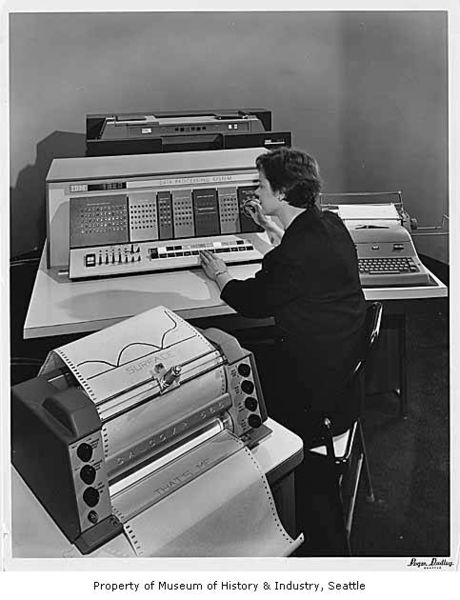The IBM 1130 Computing System, introduced in 1965, was IBM's least expensive computer at that time. A binary 16-bit machine, it was marketed to price-sensitive, computing-intensive technical markets, like education and engineering, succeeding the decimal IBM 1620 in that market segment. Typical installations included a 1 megabyte disk drive that stored the operating system, compilers and object programs, with program source generated and maintained on punched cards. Fortran was the most common programming language used, but several others, including APL, were available.
IBM 1130
IBM 1130 console
IBM 1130 with peripherals, including paper tape reader punch, IBM 1442 card reader/punch (rear) and IBM 1627 Calcomp plotter.
A double width SLT card from an IBM 1130. The square metal cans contain the hybrid circuits.
The IBM 1620 was announced by IBM on October 21, 1959, and marketed as an inexpensive scientific computer. After a total production of about two thousand machines, it was withdrawn on November 19, 1970. Modified versions of the 1620 were used as the CPU of the IBM 1710 and IBM 1720 Industrial Process Control Systems.
IBM 1620 Model I, Level H
IBM 1620 data processing machine with IBM 1627 plotter, on display at the 1962 Seattle World's Fair
IBM 1620 SPS card
IBM 1627 drum plotter








